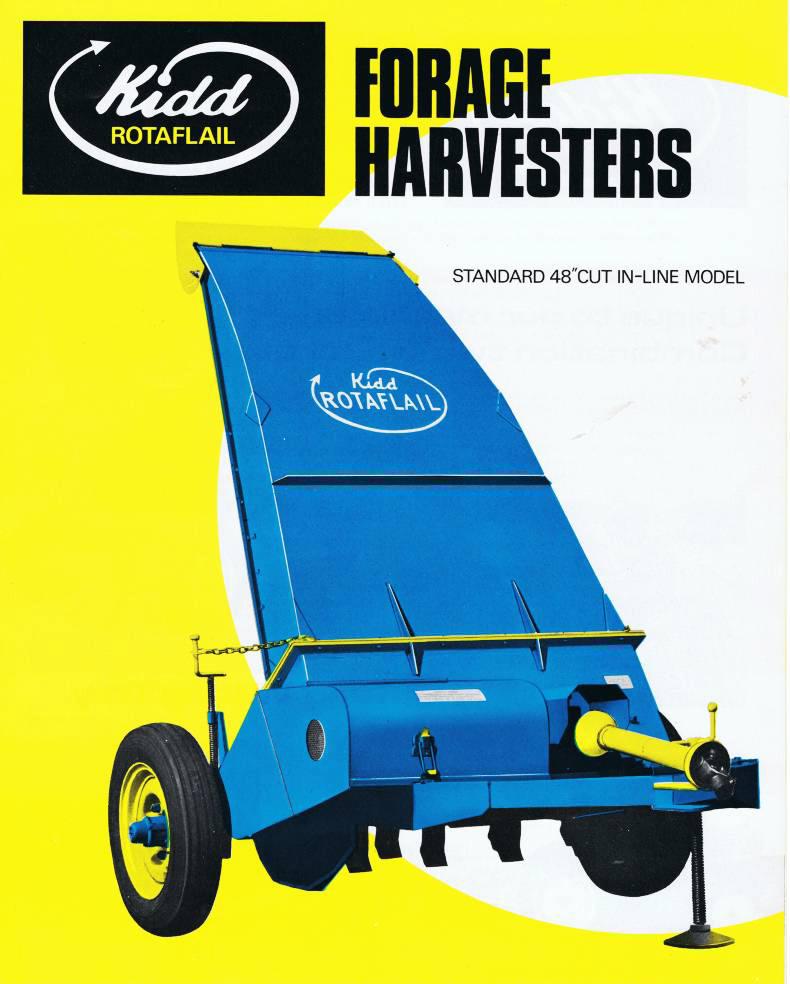In this week’s Focus we look at the topic of silage making and that tempted me to look at the history of silage making machinery in Ireland. I delved into the archives of the Irish Farmers Journal to check out what machines were available for silage making 50 years ago, back in 1965.
Silage making was beginning to attract interest in 1965, but the bulk of winter feeding was still being made as hay. Tractor power dictated the size and type of silage harvesting – back then a 65hp tractor was considered big and it was the year after Ford launched the 1000 Series models and Massey Ferguson launched their 100 Series tractors. But, by this stage, these bigger tractors were still light on the ground.
Among the silage harvesters, the single chop flail machines dominated the market. The Danish Taarup brand, which remains today part of the Kverneland group, now owned by the Japanese Kubota company, is one of the original brands.
Back in 1965, Taarup was imported by Irish Agricultural Machinery, based at Abbey Street in Dublin’s city centre. Taarup offered two sizes of single chop – 43in and 50in and the latter wider machine could be side-mounted or trailed, while the smaller model was side-mounted. The entry price for the Mk 2 Tempest harvester was £270.
Massey Ferguson and David Brown were important tractor brands at the time and they too offered silage harvesters in their range. Massey Ferguson offered an in-line and an offset single-chop silage harvester option from their Baggot Street, Dublin, offices, with prices starting at £298 for the smaller 40in cutting width model.
David Brown, based near Dublin’s Broadstone bus depot, claimed to be the market leader for silage harvesters in the early 1960s, with its in-line 40in cut Albion Hurricane model. David Brown was very proactive in the market, and from 1959 to 1965 offered the David Brown Silage Scheme with an unsecured loan of £100 and a £15 grant towards the purchase of a tractor and silage harvester combination. The harvester price was £270 and that was after the £15 grant.
Other brand names from that era included the Bamford range, imported by JH Eames & Son Ltd, of Great Strand Street, Dublin, while JH Donnelly & Son, then based in Dublin’s Dame Street, imported the Barford and Blanch machines.
The Evans single-chop flail harvester was imported by Robert Sheane of Blainroe Garage in Blainroe, Co Wicklow, while the well-known farm machinery company, McGee’s of Ardee, had an expensive Allis Chalmers, American-built pickup harvester in their range.
JJ McCulloch & Sons of Ballyboughal, Co Dublin, were the Claas importers at the time, but Claas had no silage harvester in their range. Instead, McCulloch’s imported the Wallace JF side-mounted flail silage harvester and a McKee pickup machine.
McGee’s of Ardee shared the Irish agency for the British-built Wilder range of flail harvesters with the Dublin-based Lenehan’s of Capel Street, who were huge in farm machinery at the time. The Wilder Sila-Masta models were 40in and 53in cut and both were in-line harvesters that were more power -demanding than much of the competition. These were designed as robust machines, with claims that they could be used for scrub clearance.
McGee’s were soon to take on the Kidd range of machines, which by 1965 included an in-line single chop machine called the Rotoflail that proved robust and popular.
DH Sherrard & Co Ltd, based in Ballintemple, Cork, and with a depot at Santry, Dublin, were importers at the time for the Silorator and Lundell silage harvester ranges. The Silorator Dandy was an interesting direct-cut, side-mounted harvester, combining the twin rotary cutters of a Hayter topper with a blower. The British-built 40in and 60in cut Lundell machines were in-line flail harvesters. For a period, the Lundell harvesters were part of the John Deere family, as were the Taarup machines.
JH Saville & Co, the International Harvester tractor importers of the day, imported a British-built Markham range of in-line single chop flail silage harvesters for a competitive £298. The English-based MB Wild & Co, based in Birmingham, had a Wild Twaites range of pickup-type harvesters on offer, one of which chopped the grass with what was described as a lawnmower-type drum, smaller but similar to the drum design of today’s bigger machines.
Among the other ranges of silage harvesters on offer were the Koela models, both as flail single-chop offset machines and a pickup harvester. These were imported by Semac Ltd, based at Carrigrohane Road in Cork. Semac later took on the Danish Gyro range of single-chop flail harvesters. Abbey Machinery of Nenagh were importers for the UG range of Danish-built harvesters, and these continued to be available from the company up until the 1980s.
JF Farm Machines had, by this time, been established in Ireland and the Danish-owned company was offering a single-chop flail harvester in its range.
The Smith Group, based in Cavan and then larger importers of used Massey Ferguson tractors, were selling a Tractool-branded range of single-chop silage harvesters with a 43in cut, while Farmhand, then based in Phibsborough, Dublin, were importing the Refix range of side-mounted single chop flail machines.






 This is a subscriber-only article
This is a subscriber-only article











SHARING OPTIONS: